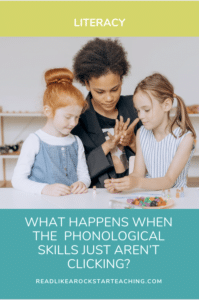
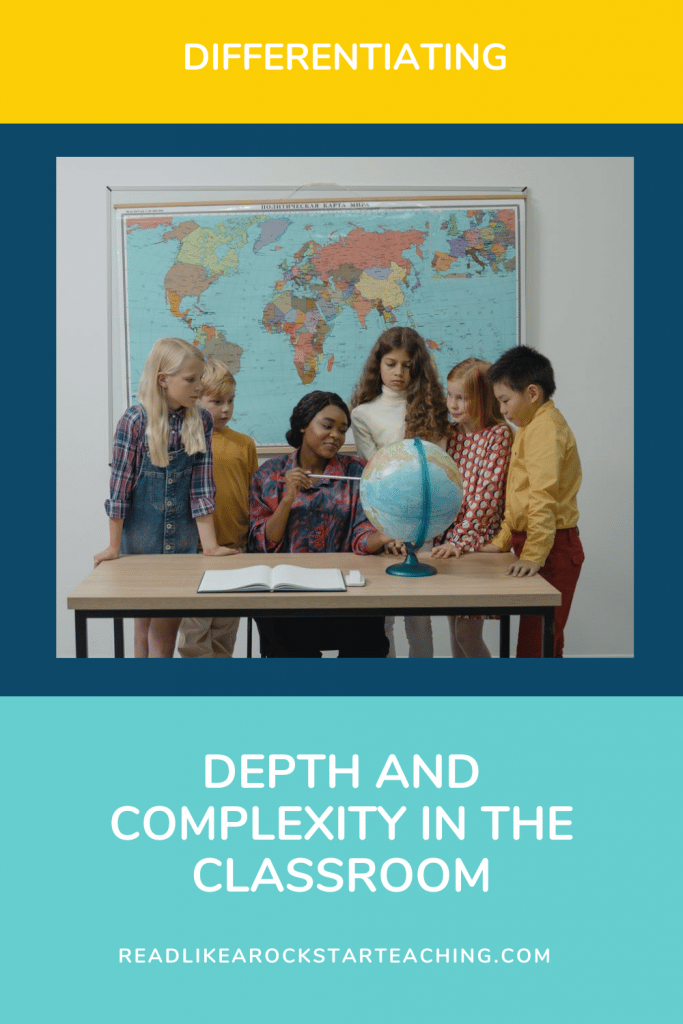
A really smart professor named Dr. Sandra Kaplan noticed there was a difference in the knowledge experts had on a topic had vs. people who only knew a little about a topic. Experts think in deep and complex ways!
Some icons, or pictures, were created as a tool to help students and teachers think in this way.
It’s important for all learners to challenge themselves to think deep and make connections to what they are learning about.
The Depth and Complexity framework consists of icons that align with a certain way of thinking. They were designed to help students go beyond a surface level understanding of a concept and push them to think critically. This way of thinking is perfect for gifted learners AND everyone else in your classroom in ANY grade level. Click the image below to try my freebie out!
Now, if you’ve ever seen the Depth and Complexity Icons, they probably looked like this. I created my own icons and posters to resonate with my students (kindergarten and first grade). The framework and thinking that is promoted is the same though. There are 8 icons to help kids go deeper and 3 to add complexity.
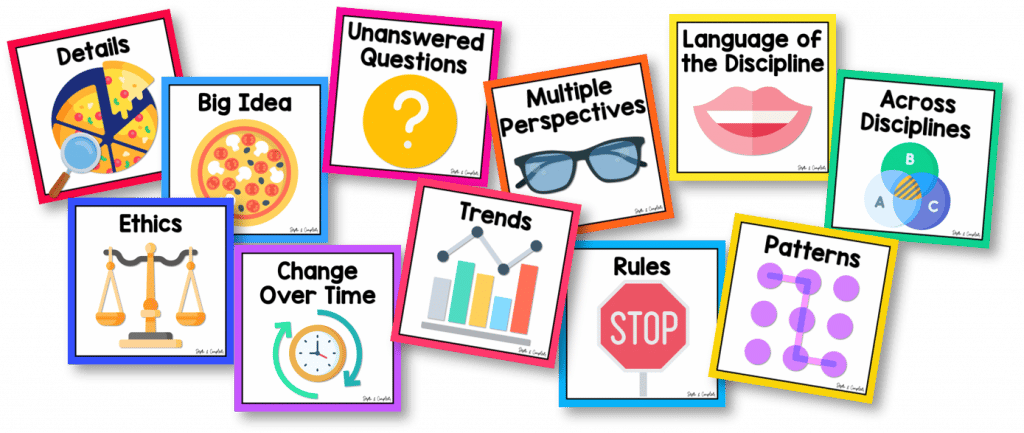
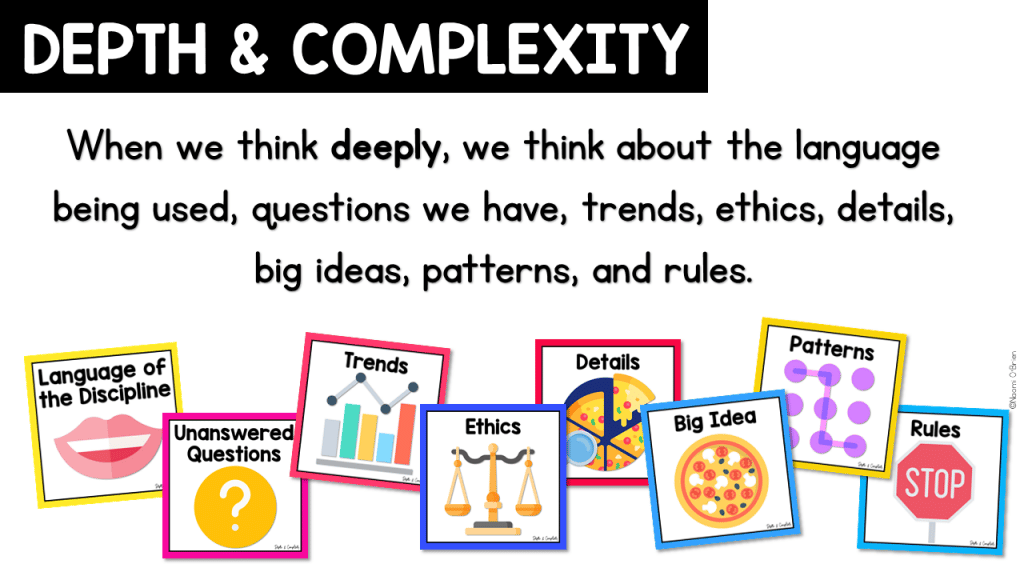
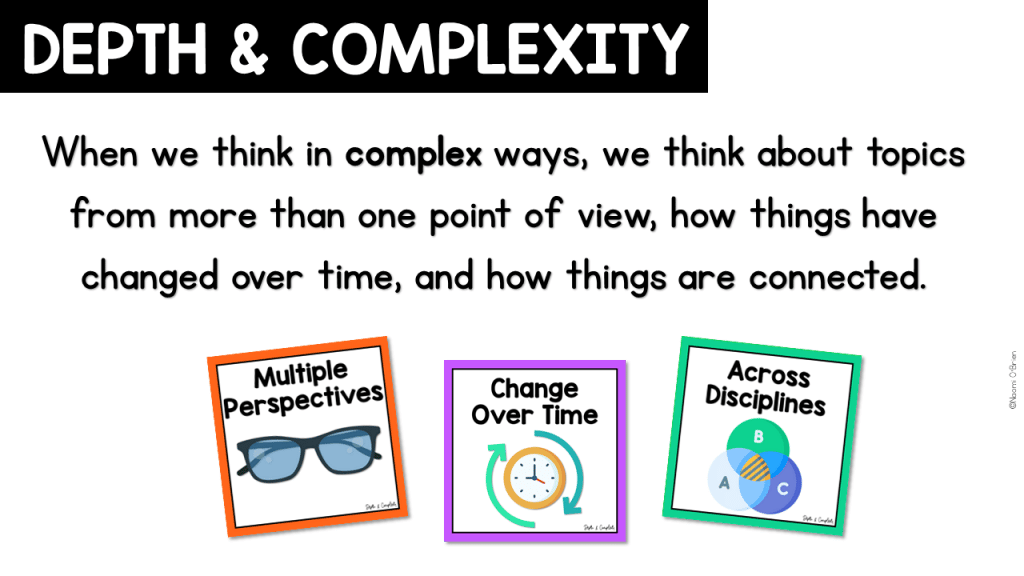
Depth and complexity is for all grade levels, but this example is for my primary teachers. If you’re a lower elementary teacher, I want you to think about the story of the Three Little Pigs.
Don’t skip ahead to the questions I planned with depth and complexity.
If you read this story to a kindergarten or first grade class, what questions would you ask to make sure students understood the story?
I did a quick Google search and here are some of the questions I found to accompany this story.
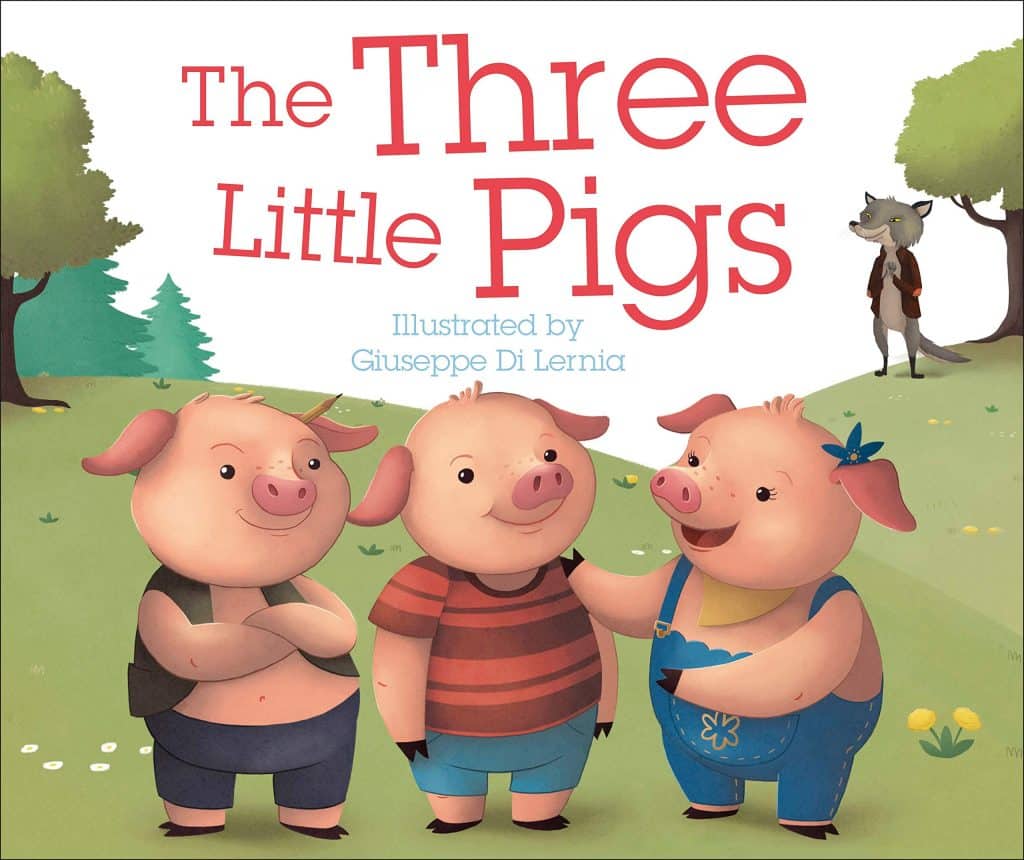
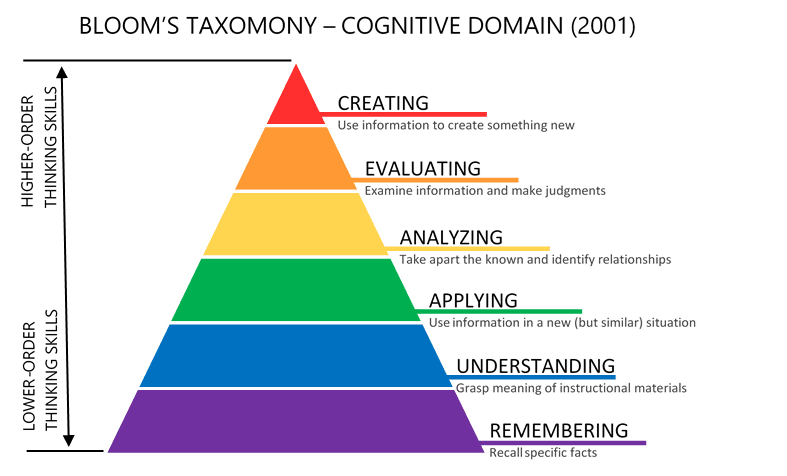
The problem with all of those questions, if you’re familiar with Bloom’s Taxonomy, is that they only require lower-order thinking skills, and that is not where we want any of our students to be. It doesn’t matter that they are in kindergarten or first grade- we want to promote higher-order thinking skills for ALL of our students!
Don’t set the bar low. Shoot for the stars and see where your students land.
Even if your students can’t come up with the “right” answer for a higher order thinking question, the fact that they were attempting to think in that way is incredible and growing their thinking skills.
Pose a deep or complex question for your students and see what they come up with. Your questions should push students to respond with more than one word. They should and can be doing more than just recalling, listing, and identifying information found in a lesson or story.
Look at the questions above again. Can you honestly say that a group of kids that answered those questions would have their thinking changed? Besides trying to remember what the teacher said during the read aloud, does it seem like much thinking was involved for them? Are they doing anything with the information except for recalling it?
One of the things I love about depth and complexity is that it allows for divergent thinking. There can be more than one answer. There are many possible solutions and ways of thinking that can be discussed and debated at a high level.
Let me show you some of the questions I generated for The Three Little Pigs. I want you to compare the type of thinking kids would be doing to answer my questions with the ones I found above. I also want you to consider the responses students of various levels might give.
Note: I would NEVER ask every single one of these questions on the same day during a lesson after reading a story. I just wanted to show how to apply depth and complexity to a simple classic like The Three Little Pigs using all of the icons.
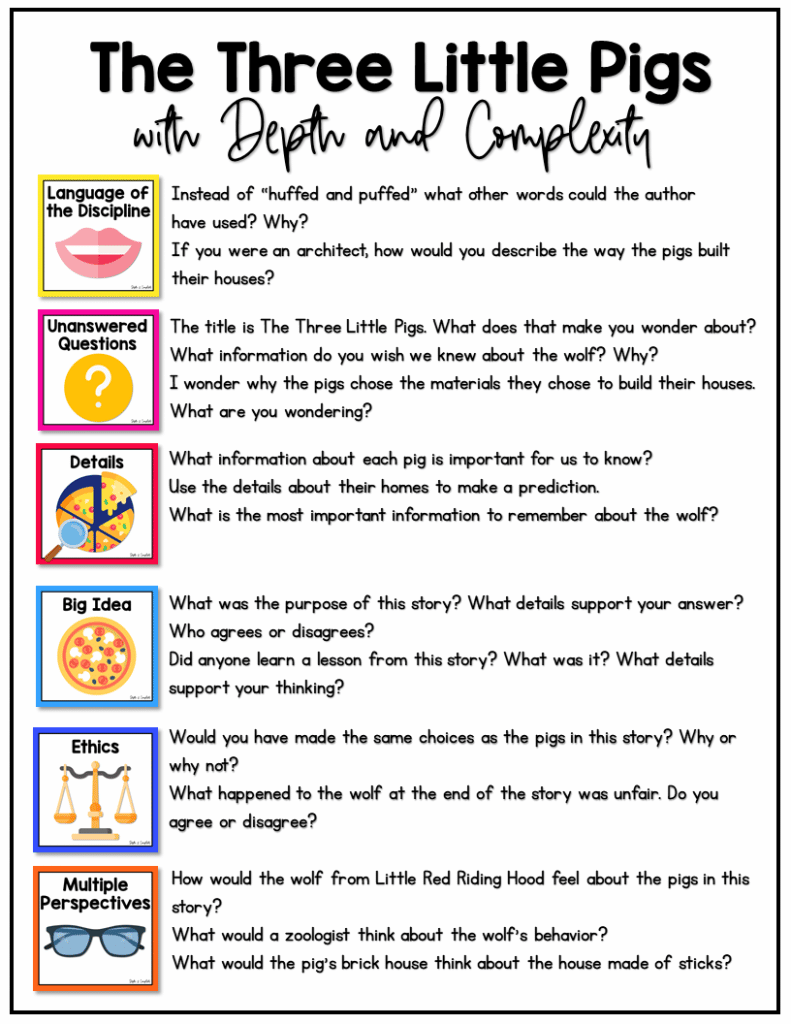
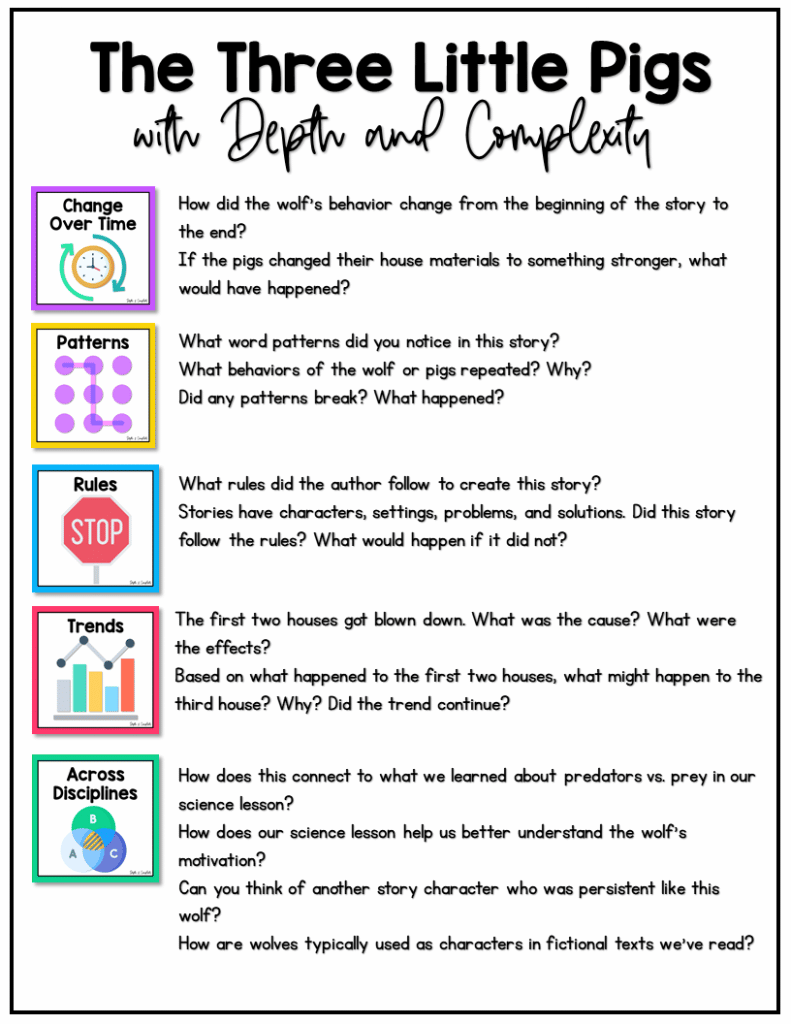
Can you see how this is instant differentiation? If you have gifted learners or students that need a challenge, you don’t have to have one group reading The Three Little Pigs while the other group is reading The Catcher in the Rye. You can just ask better questions that challenge everyone.
Everyone can listen to the same text for a read aloud and engage in high-level thinking and discussion about the text.
(Pairing students appropriately for this text discussion/debate is important as well. I wrote a blog post about how it worked in my classroom if you’re interested.)
So, earlier I said I would never ask all of these questions at once. Which ones would I would use?
I have blogged in-depth about how I plan my reading lessons here.
Long story short, I wouldn’t use this text, because I choose books that are 1-2 levels above their grade level.
I choose complex texts that I can revisit throughout the week and I choose a new focus each day based on the common core standards and daily objectives. Each day I would ask questions that promote mastery of the 2-3 standards we are focusing on and infuse deep and/or complex questions.
I follow the same practice in writing, math, social studies and science. It usually starts out with me planning my lesson and thinking of the first questions that pop into my head.
In social studies, details, big idea, multiple perspectives, change over time, and ethics are a must to include!
Rules, trends, language of the discipline, multiple perspectives and big idea pops up in math daily!
Patterns, details, big ideas, language of the discipline, across disciplines, multiple perspectives, and ethics are my go-to’s for science.
What rule will help us solve this math problem?
What pattern do you notice in the life cycle of a frog? What would happen if this pattern didn’t repeat?
Cutting down trees is wrong. Who would agree? Who would disagree? Why? (Ethics and Multiple Perspectives)
How have immigration laws changed over time? Why?
Compare Venus to Mars. How are they the same or different? (Details)
Because of my use of depth and complexity to guide my questions, over the years I have naturally shifted the questions my mind auto-populates. But before this happened, I would take the basic questions I thought of initially and then scan through the depth and complexity icons to see how I could make my question even better.
I created some Thinking and Planning Mats that can be paired with any content area. They can be used for students working individually or in group settings to think in deep and complex ways.
Once you become great at planning questions using depth and complexity, you can start making assignments rooted in depth and complexity!
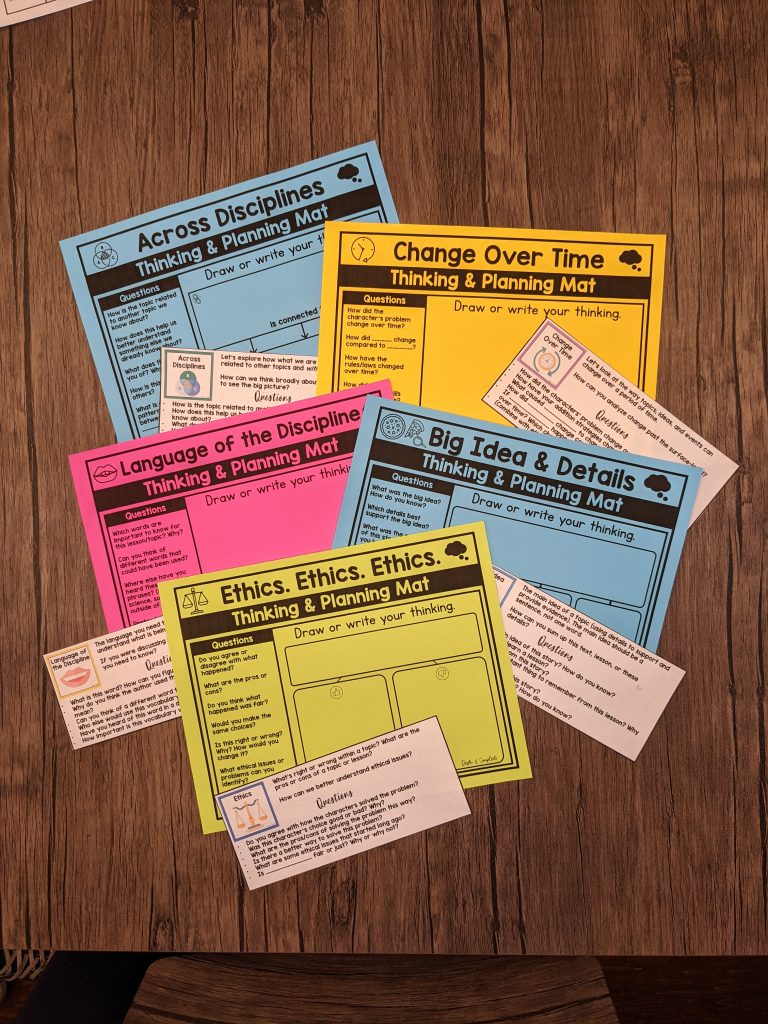
If you’re looking for more examples of questions that use depth and complexity and a pacing guide, and an engaging slideshow to help introduce these icons to kids, I’ve got you covered. The slide below shows how you could introduce the Multiple Perspective Icons to students.
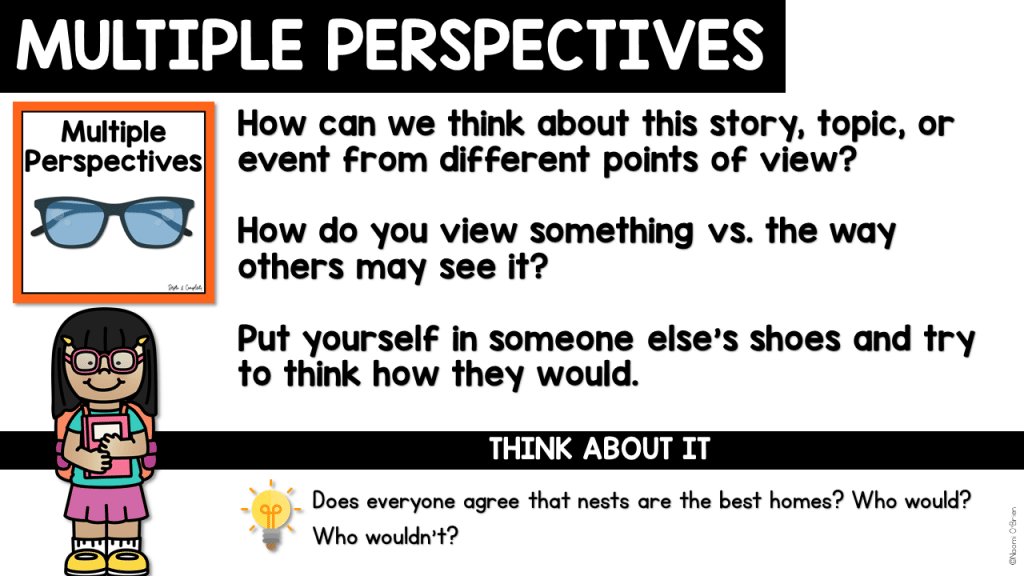
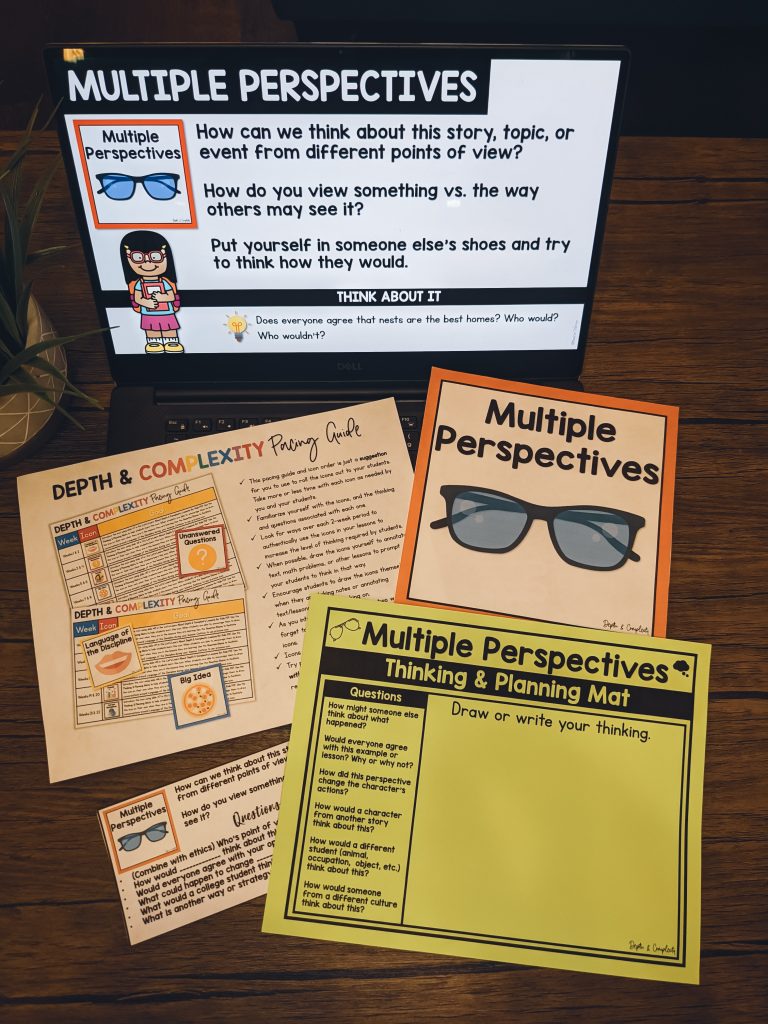
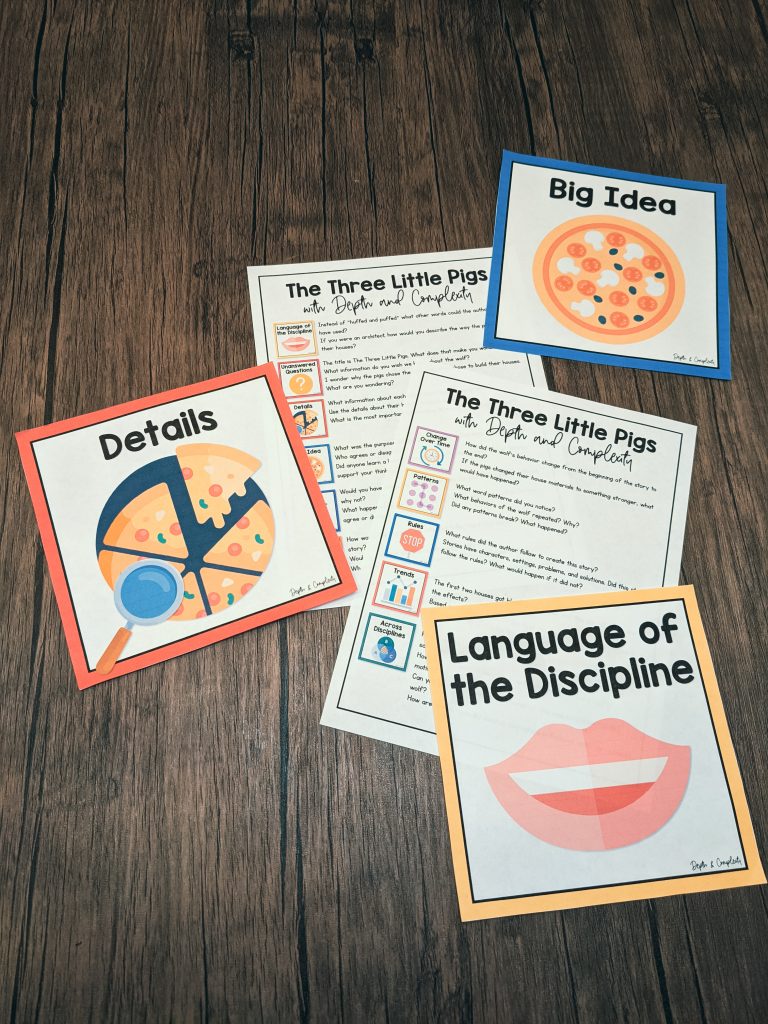
Search the internet for more ideas and you can also purchase my resource below!

Your download includes:
I hope this was helpful for you and your students!
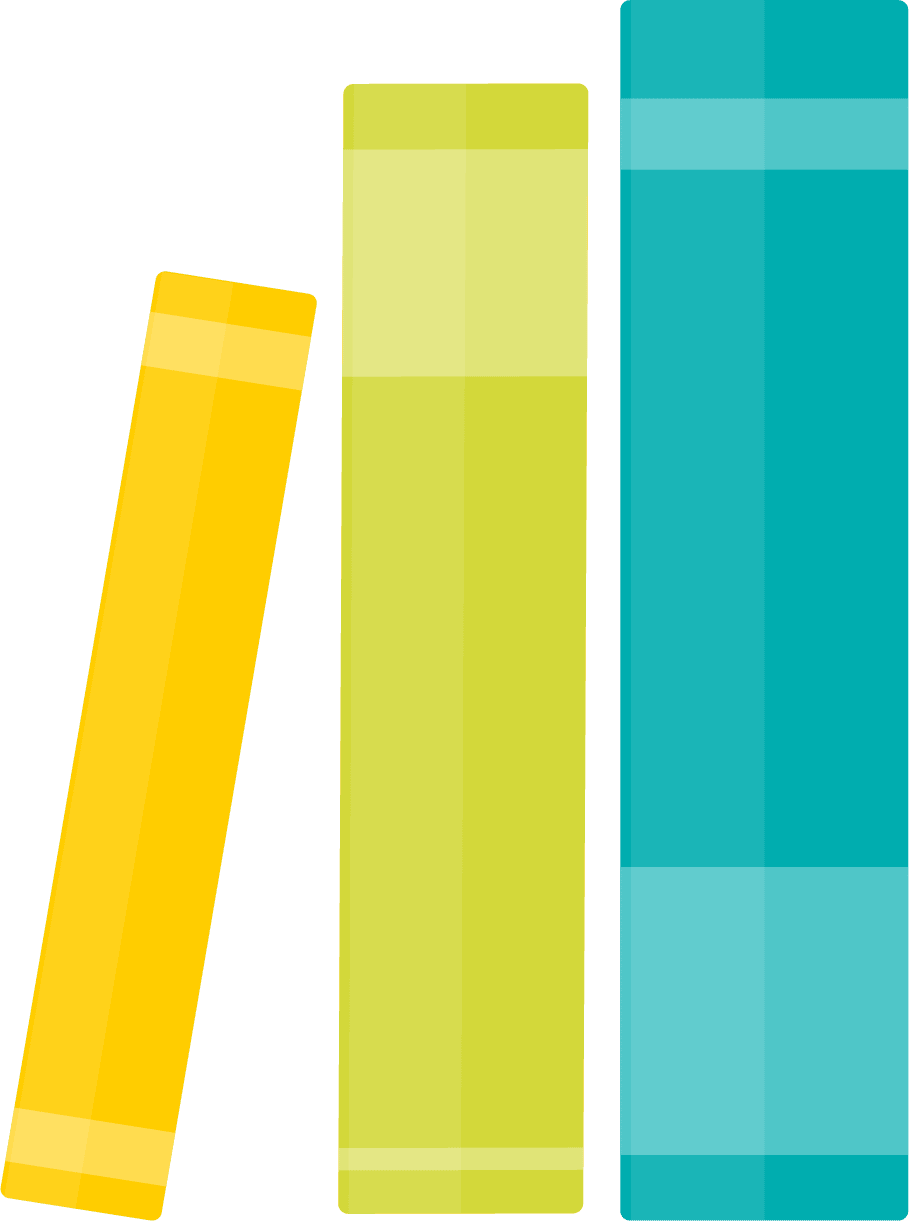

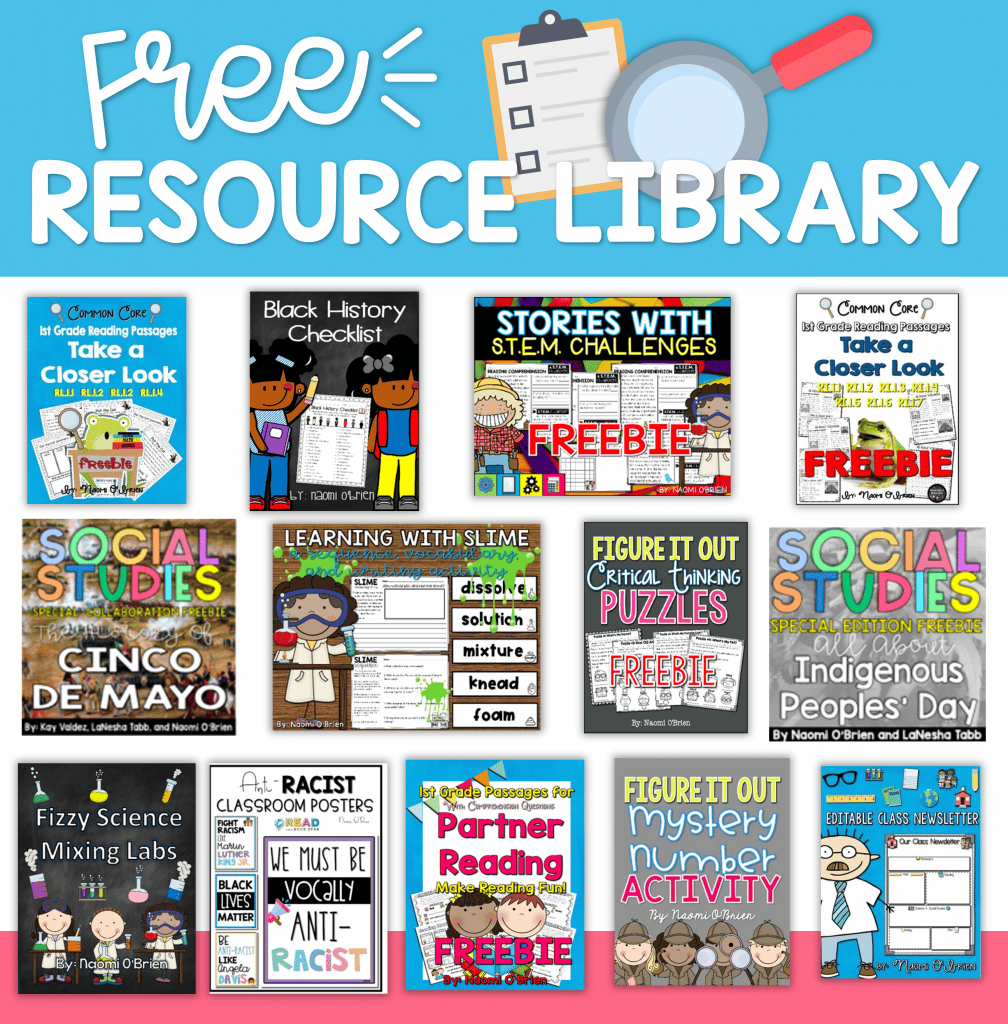
| Cookie | Duration | Description |
|---|---|---|
| cookielawinfo-checkbox-analytics | 11 months | This cookie is set by GDPR Cookie Consent plugin. The cookie is used to store the user consent for the cookies in the category "Analytics". |
| cookielawinfo-checkbox-functional | 11 months | The cookie is set by GDPR cookie consent to record the user consent for the cookies in the category "Functional". |
| cookielawinfo-checkbox-necessary | 11 months | This cookie is set by GDPR Cookie Consent plugin. The cookies is used to store the user consent for the cookies in the category "Necessary". |
| cookielawinfo-checkbox-others | 11 months | This cookie is set by GDPR Cookie Consent plugin. The cookie is used to store the user consent for the cookies in the category "Other. |
| cookielawinfo-checkbox-performance | 11 months | This cookie is set by GDPR Cookie Consent plugin. The cookie is used to store the user consent for the cookies in the category "Performance". |
| viewed_cookie_policy | 11 months | The cookie is set by the GDPR Cookie Consent plugin and is used to store whether or not user has consented to the use of cookies. It does not store any personal data. |
Thank you for your interest in booking a private professional development experience! Please fill out our Booking Inquiry form and a member of our team will contact you soon.
One Response
Naomi! I can’t thank you enough for this post and for the resources you’ve created! For many years I have struggled to move beyond just a few icons for my first grade students, but how to help connect them to my students’ needs in a developmentally appropriate way! You and LaNesha are my go-to teacher collaborators when I am looking to challenge and be authentic with my firsties. I am especially excited about the K/1 icons you created to truly engage their young minds to make stronger connections to the prompts! I have purchased other icons, but for some reason, the colors, or fonts, or even reinvented icons are not close enough for me to feel comfortable introducing them to my students with the knowledge that they will progress to the traditional ones in our second grade and beyond. These are wonderful and truly bridge their learning! Thank you, thank you, thank you!